With Premier Dan Andrews deciding to call it quits, I thought it was a good excuse to examine Melbourne house prices to see how they are tracking.
According to CoreLogic’s daily dwelling values index, Melbourne is the nation’s biggest house price loser, falling the most since the RBA began lifting interest rates in May 2022, and rebounding the least since the market began rising in value in early February this year.
So far in September, dwelling values at the 5-city aggregate level have risen by 0.86%, with Adelaide (1.28%) and Brisbane (1.26%) leading and Melbourne (0.33%) lagging:
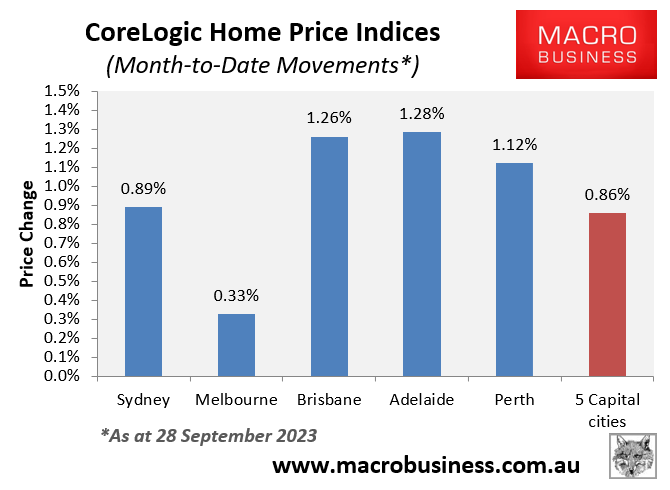
Over the latest quarter, dwelling values at the 5-city aggregate level has risen by 2.8%, with Brisbane (4.1%) and Adelaide (3.9%) again leading and Melbourne (1.2%) lagging:
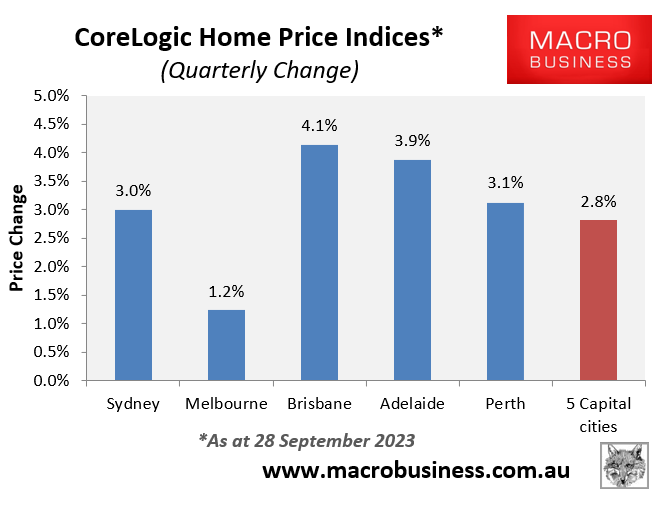
Since dwelling values began rebound in early February, values across the five major capitals have bounced by 7.3%, led by Sydney (9.9%) and Brisbane (7.4%). Once again, Melbourne is the laggard with values there only rebounding by 3.4% – less than half of the average:
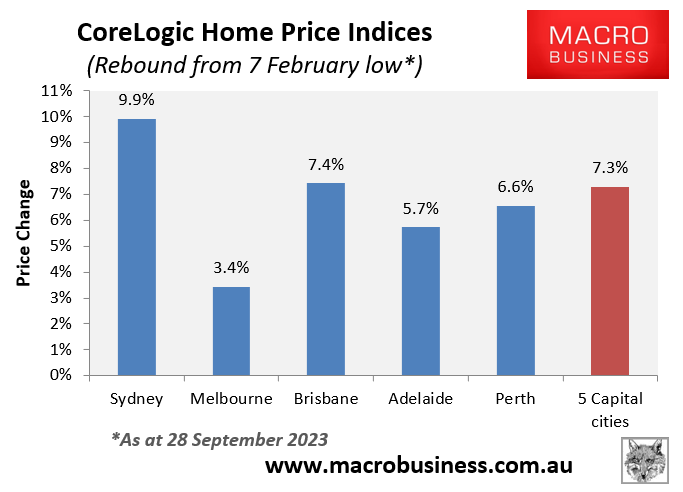
Finally, Melbourne has suffered the largest price fall since last year’s peak in response to the RBA’s monetary tightening beginning in May last year.
As shown below, Melbourne home prices are 6.5% below last year’s peak, well below the 3.4% fall recorded at the 5-city aggregate level:
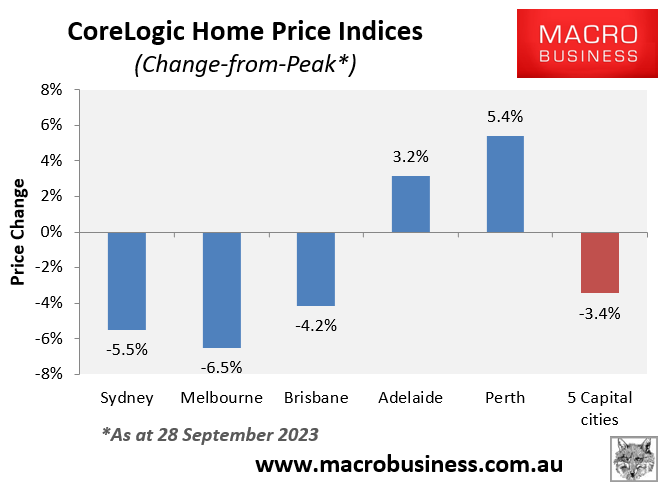
Melbourne’s poor price performance comes despite Victoria’s nation-leading population growth on the back of the Albanese Government’s record net overseas migration:
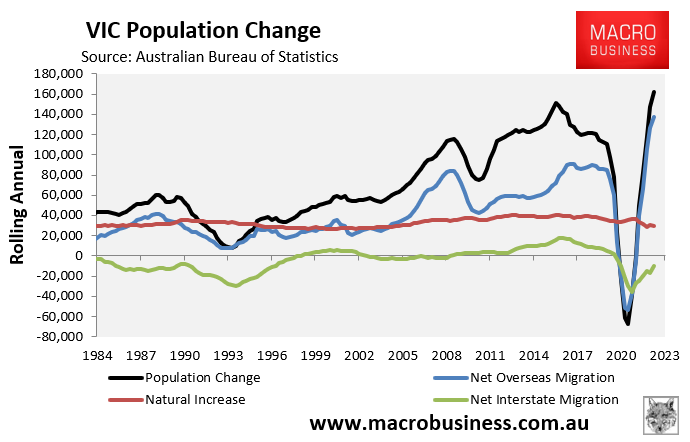
Victoria grew by an unprecedented 161,700 in the year to March 2023, which was the highest annual population increase recorded by any Australian jurisdiction in history.
If not for the Albanese Government’s ‘Big Australia’ immigration policy, Melbourne house prices would certainly be circling the drain.

